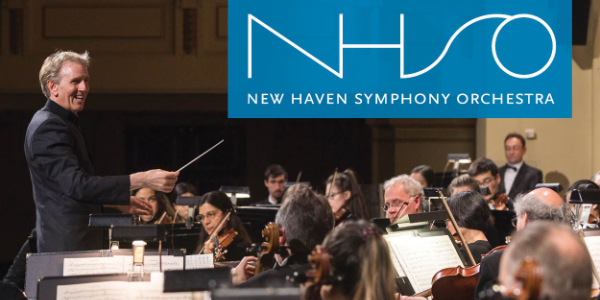You won’t find mummy wraps made of silicone rubber in the Peabody Museum of Natural History’s collection. But you will find them at Artspace, where new exhibition Everywhere and Here collects five artists’ responses to objects they plucked from the Peabody’s vast accumulations.
Among the artists invited to participate by Lisa Dent, Artspace’s executive director and the curator of the exhibition, is Yale MFA alumna Martha Friedman, who, unbeknownst to Dent, had already been studying Egyptian mummies. Entrée to the Peabody collection meant she could finally learn from experts the precise method of wrapping bodies for burial, a technique she had struggled to master, Dent says. The result is a striking exhibit in Artspace’s largest gallery that melds the ancient past with a futuristic present.
sponsored by
Friedman cast four hollow head-and-shoulders sculptures in glass, some of them leafed in gold, and placed them on concrete pedestals of varying heights. With lighting to throw their profiles on the walls, they evoke both the stone busts you might find in a museum of antiquities and a glass-and-concrete vision of a museum of the future. Each head is partially wrapped, with bands spanning its crown and crossing at the nape of the neck and under the chin. Expressionless faces peer from the tight rectangular gap that’s left between bands covering forehead, cheeks and chin. Mirrors beneath each bust allow you to see—at least, for those installed below eye level—into the cavities of their heads, a view that transforms the filigree of gold leaf into neuronlike clusters. A twisting pile of pink “wrapping cloth” beside one bust calls to mind a knot of human tissue.
Six framed panels from the Peabody that Dent says had not been on display in the museum remind us that Friedman’s demonstration isn’t just an artistic exercise. Mounted on each are several swatches of actual mummy cloth, labeled in a 19th-century hand. The fragments—splotched, fraying, misshapen—are of varying fabrics and weaves and date as far back as “over 2100 years before the Christian Era.” Friedman’s installation links us to those ancient cloths and makes us think about our own mortality and our treatment of the dead.
Friedman’s is just one of five thought-provoking takes on items from the Peabody’s collection. Cauleen Smith uses the Allende Meteorite, “the most studied and examined meteorite in human history,” as her wall narrative states, to riff on the work of pioneering women in the science of crystallography, call out the idea of museum ownership of such an object and remind us of our “staggering” ignorance about the universe. A much smaller meteorite is the jumping-off point for pairs of Mars Rover-inspired images and redacted love letters in Brittany Nelson’s work. Both Tuan Andrew Nguyen and Anina Major worked with the Peabody to find items from their own cultures in Southeast Asia and the Caribbean, respectively. A series of 3D scans of masks inspired Nguyen’s video and still image work that integrates protest and ceremony, while a woven handbag, a decorative gourd and a shard of Palmetto Ware pottery all contribute elements to the installation by Major, who grew up in the Bahamas.
Major’s five baskets, woven from strips of clay rather than plant matter, are displayed on makeshift wooden stands in a rectangular field of crushed oyster shells, visible from the street in Artspace’s corner gallery. Imperfect like our own used and abused housewares, with gaps between their strips and broken or frayed edges, these baskets tilt and buckle and reach like creatures struggling to free themselves. That struggle may call up the people from whom they came—North Africans enslaved in the Bahamas. Look closely in the carpet of Northeastern oyster shells, and you’ll find polished African cowrie shells scattered among them. They point back not only to African ancestors but also to a decorative gourd from the Peabody with a woven base and strings of cowries along its body.
Putting these natural history museum objects in a new setting gives them a whole new life. Everywhere and Here encourages us to consider them as not just artifacts of a bygone time and culture—or even universe—but also as messengers in our own time and place.
Everywhere and Here
Artspace – 50 Orange St, New Haven (map)
Wed-Sat noon-6pm through November 20
(203) 772-2709 | info@artspacenh.org
www.artspacenewhaven.org/…
Written and photographed by Kathy Leonard Czepiel. Image 1 features a piece by Martha Friedman. Image 2 features a display of works by Anina Major.









